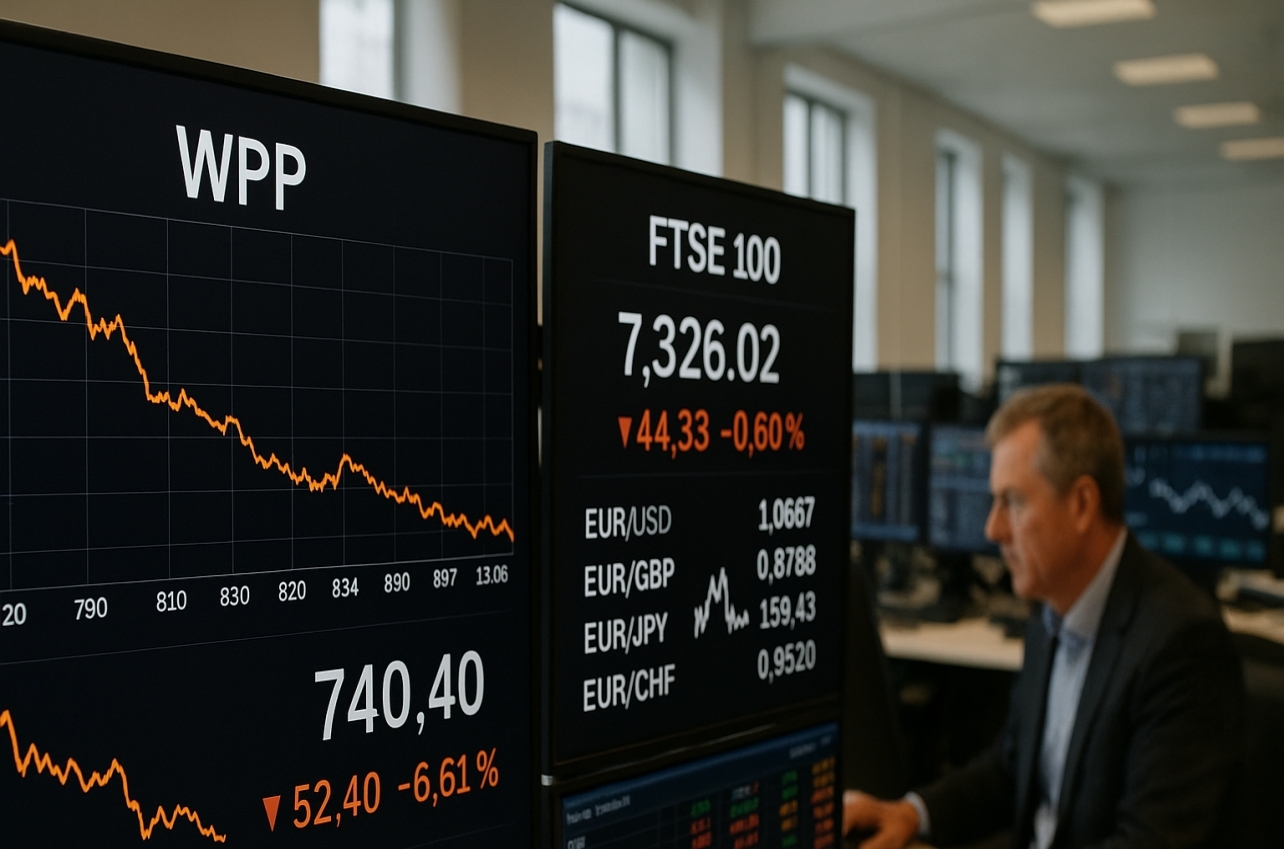
Recently, according to the Financial Times, British advertising giant WPP released its latest quarterly financial report, showing that the company's revenue decreased by 8.4% year-on-year, and the full-year revenue forecast was lowered to a decline range of 5.5% to 6%. After the news was announced, the share price of WPP plummeted to its lowest point since 1998, directly interrupting the consecutive rise record of the FTSE 100, the main index of the London stock market. On the same day, the European Central Bank announced that it would keep its main interest rate at 2%, marking the third consecutive time it had held steady. The two pieces of news jointly pushed market sentiment towards caution and became the main trigger for short-term fluctuations in the European financial system.
From the perspective of financial operation, the predicament of WPP has exposed the linkage risk between the decline in the profit quality of European enterprises and the fragility of their capital structure. For a long time, the European market has relied on the merger and acquisition expansion and financing repo model driven by a low-interest-rate environment. Once the interest rate rise cycle is halted, the debt repayment costs of enterprises increase, the profit margin space is compressed, and the return on capital declines. The market's repricing of this fragile structure will trigger a withdrawal of funds from the secondary market and an expansion of bond yield spreads, thereby creating a chain reaction on the balance sheets of banks and institutional investors. This pressure was transmitted to the broader capital market through the decline in stock prices and the rise in credit spreads, amplifying overall financial volatility.
The European Central Bank kept interest rates unchanged, with the intention of maintaining a stable financial environment. However, in market interpretation, it was regarded as a signal that the space for monetary policy was limited. Investors believe that the central bank is caught in a dilemma between inflation and growth, unable to further stimulate the economy nor daring to cut interest rates rashly. This leaves the capital market lacking a clear direction. For banks, the stagnation of interest rates means that the spread income is difficult to increase, while inflationary pressure erodes the actual income level. Financial institutions were forced to raise the risk premium requirements for risky assets, leading to an increase in financing costs and suppressing the refinancing activities of enterprises. Overall credit expansion has slowed down, and the liquidity buffering capacity of the financial system has declined.
Meanwhile, the short-term correction in the London market has revealed problems with the confidence structure within the capital market. The sharp drop in the share price of WPP has led investors to reevaluate the safety attributes of "blue-chip" enterprises, while the interruption of the consecutive rise of FTSE 100 has shattered the market's habitual confidence. Investment funds have shifted from stocks to bonds and cash-like assets, leading to a passive rise in short-term capital market yields and an increase in the assets of money market funds. This phenomenon may seem like a defensive operation on the surface, but in fact, it indicates that the trust in the credit quality of enterprises within the European market has weakened. During the rebalancing process, institutional investors tend to reduce their allocation to growth and cyclical assets, further weakening the market's risk tolerance.
From the perspective of global capital flows, the turmoil in the European market may accelerate the reallocation of international capital to the United States and Asia. The capital attractiveness of the United States has increased during the interest rate cut cycle, while some Asian economies, due to their relatively optimistic growth prospects, have become important destinations for capital risk aversion and arbitrage. This cross-regional capital flow has intensified the fluctuations in the euro exchange rate, weakened the competitiveness of European exports, and also exerted valuation pressure on financial assets in the Eurozone. For European investment funds, the dual uncertainties of exchange rates and interest rates will increase hedging costs, causing the asset management industry to face profit compression.
Overall, the market fluctuations triggered by the WPP incident and the decisions of the European Central Bank have essentially exposed the structural contradictions in the European financial system: weak corporate earnings, declining capital returns, limited policy space, and fragile investment confidence. The concentrated reaction of the financial market to these factors is a repricing of the growth prospects of the European economy. If there is a lack of substantive fiscal stimulus and industrial structure adjustment in the future, relying solely on monetary policy to maintain stability will be difficult to reverse the cautious trend of the capital market. The European financial system is in a transitional period from liquidity-driven to profit quality-driven, and the uncertainty of this transition is precisely the root cause of the current market fluctuations.

Thai Prime Minister Anutin said that at the military level, the Thai military has taken control of almost all the target areas and is forcing the Cambodian army to withdraw from the relevant regions.
Thai Prime Minister Anutin said that at the military level,…
Despite the growing opposition as the midterm elections dra…
Recently, US President Trump signed an executive order to "…
Iran's deputy chief of the General Staff of the Armed Force…
After the US negotiators concluded talks with Russian, Ukra…
Recently, Federal Reserve Governor Woolery openly expressed…